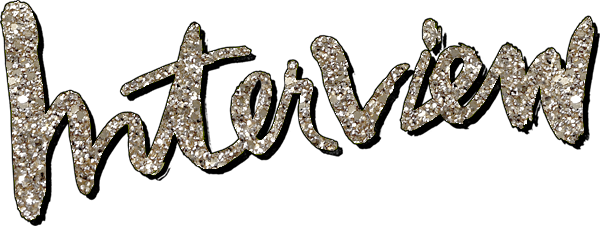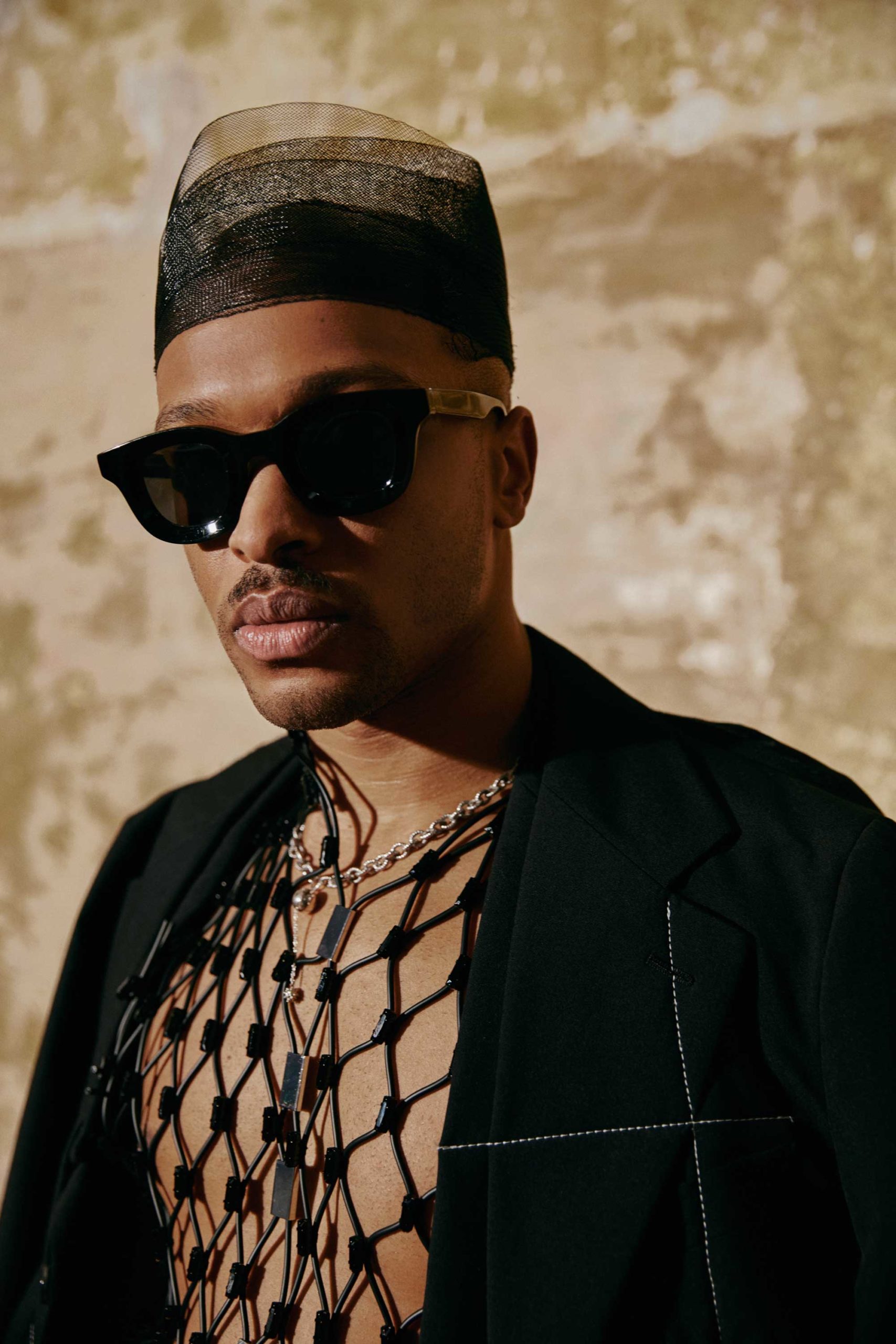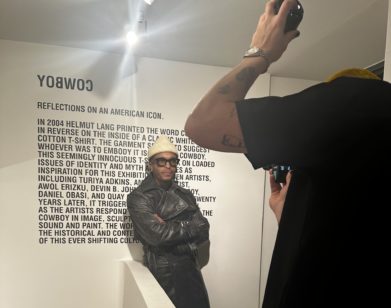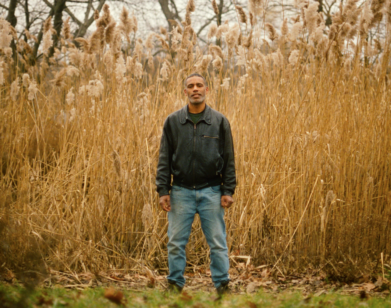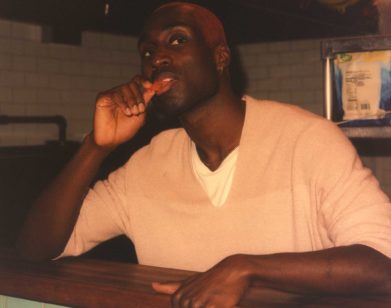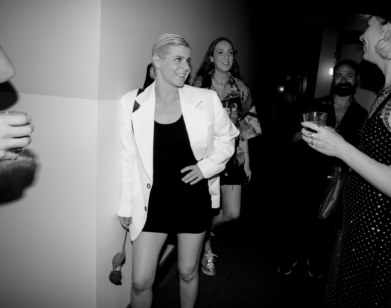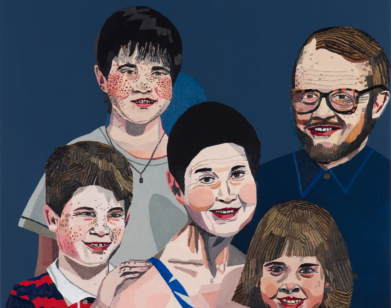LESSON
Antwaun Sargent’s Guide on How to Really Look at Art
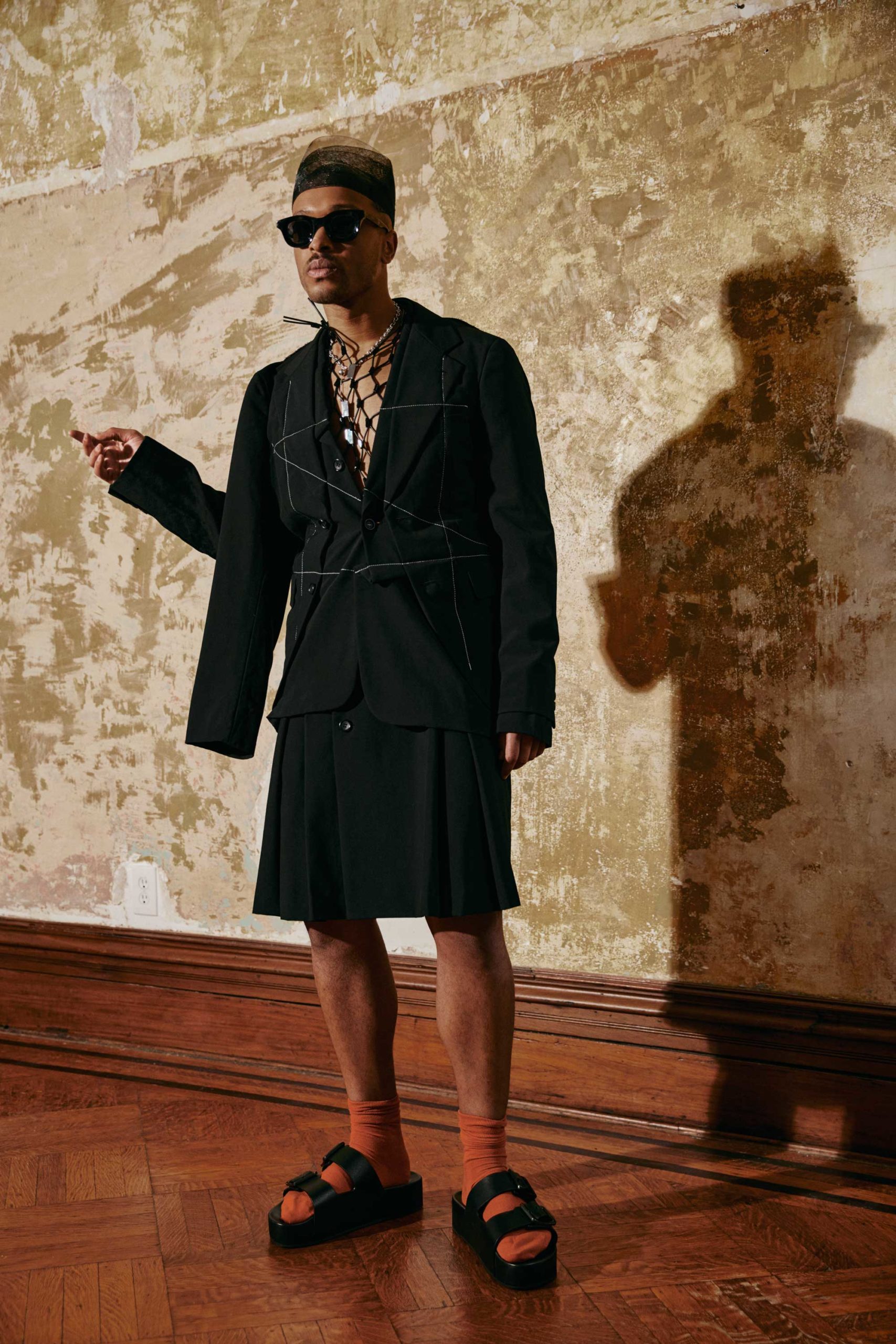
Antwaun Sargent. Blazer and Skirt by Comme des Garçons Homme Plus. Vest by Burberry. Hat by Heather Huey. Sunglasses Antwaun’s own. Necklace by Monbouquette. Socks by Falke. Shoes by Balenciaga.
At just 32 years old, Antwaun Sargent has been handed a mandate to shake up the art world. Earlier this year, the critic, author, and curator was named a director at Gagosian, the institutional gallery with locations across the globe. The former kindergarten teacher, who made the 2019 book The New Black Vanguard: Photography Between Art and Fashion, will train his eye on artists of color as he looks to reframe the conversation around traditionally marginalized voices. But first, a primer on how he does it.
———
STEP 1
Walk up to it and take it in. While any way you choose to engage with a work of art is correct, except for, perhaps, destroying it, there is a deep, sustained looking that is possible. This kind of looking enhances the experience, moving you away from five-second judgments and the lame binaries of good and bad and like and dislike. Don’t read anything! Just experience it. What do you think? What stands out? This way of looking allows for you to have, let’s call it a pure experience. Just you and the work. A pas de deux. No context to guide your initial feelings. But you should note your feelings, because they are valid, even if they might not be right. Does the work fill you with rage? A sense of beauty? Desire? Hope? Nothingness? Is it a representation of something to which you can relate? What you think is the most important above all.
———
STEP 2
Read the wall text. It will provide key information about the context and conditions in which the work was made, as well as the curatorial thinking that led to your encounter with the work. It is important but it is not the authority. You are. Is there something in the wall text you need to research? Take out your phone and google it. The more you know, the better you see.
———
STEP 3
Read the wall label. It tells you the name of the artist and the work, the materials used to create it, the year it was produced, and its precise dimensions. Art is not made in a vacuum. It is a reflection of us. These pieces of information allow you to consider how the work is exactly connected to us.
———
STEP 4
Using all that information generously supplied by the curator, consider the formal qualities of the work: shape, form, tone, texture, pattern, color, and composition. Then consider the artist’s intention, and the social backdrop against which it was made or to which it responds.
———
STEP 5
Ask yourself, “Is there more to be known about the artist’s oeuvre?” If so, pull your phone back out and google the artist and the work. See if the work is a part of a series, how it connects to other work by the artist. Does it remind you of something from art history? Popular culture? TV? Film? A book? A song lyric? Artworks are social objects. They function in ways that are not dissimilar to other cultural items. Use your cultural knowledge, all of it, to think through the work.
———
STEP 6
Weigh all of this information against your initial thoughts about the work. Does it change or deepen your perspective? Did it point you to look at things you might have otherwise missed?
———
STEP 7
Look again.
———
STEP 8
Finally, pull out your phone one more time and take a picture. In a few days, return to the photograph of the artwork and see if you still think what you first thought about it. Our connections to art change over time. You may have the same feelings, and you may not. Either way is right.
———
Grooming: Miguel Lledo using La Prairie
